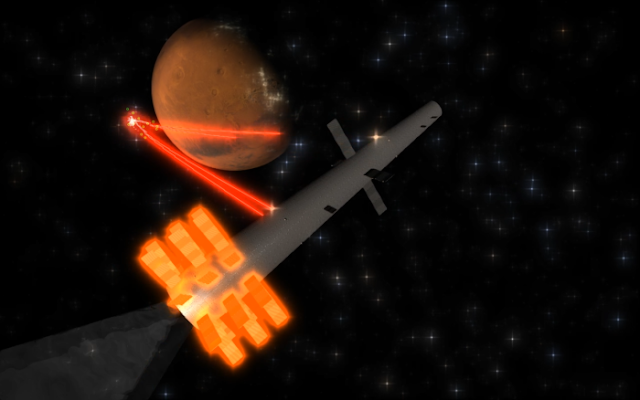Monday, 28 March 2016
Thursday, 24 March 2016
Wednesday, 23 March 2016
Stealth in Space is Possible
The first thing an aspiring scifi fan looking into the harder end of the spectrum is told is: No Stealth In Space. They're still high off the latest Star Wars, or vividly remember scenes from Alistair Reynold's Revelation Space or James S.A. Corey's The Expanse, but they're given the choice of giving that up or leaving.
This is ToughSF's answer to that.
Saturday, 19 March 2016
Monday, 14 March 2016
Saturday, 12 March 2016
The Big List of Propulsion Failures
When writing a science fiction story, often the author will place the characters inside a spaceship heading towards danger or adventure. For dramatic tension, the reactor explodes! The engines explode! The propellant tanks leak... the fuel explodes!
You have created a vast world, written colourful characters and captivating moments, so why the lack imagination when it comes to failure modes? Hopefully, this post will inspire you to rewrite those dramatic moments.
You have created a vast world, written colourful characters and captivating moments, so why the lack imagination when it comes to failure modes? Hopefully, this post will inspire you to rewrite those dramatic moments.
Friday, 11 March 2016
Innovating in armor
Representations of spacecraft in fiction usually take one of two forms: an armored block bristling with turrets, or a delicate assembly of struts and solar panels straight out of NASA's blueprints.
In this post, we'll discuss how armor can becomes a component of spacecraft design as varied and interesting as the weapons and engines, and the forms it will take can affect the appearance of a spacecraft.
Tuesday, 8 March 2016
The Future of Air War
Aerial combat is a central aspect of modern warfare, and has proven its importance from the Doolittle raid of 1942 to the latest 6th generation fighter unveiled by Russia.
However, this is poised to change as new technologies enter the battlefield. It will have to adapt or be phased out like the battleships. In this series of posts, we'll lay down the foundations and concepts you will need to grasp so that you too can plausibly predict the future of air war.
Friday, 4 March 2016
Electric Cannons and Kinetic Impactors II
In this post, we go through a list of options for the sci-fi writer or worldbuilder to make electric cannons as useful, if not more so, than other weapon systems.
Both advantages, disadvantages and predicted consequences will be looked at.
Both advantages, disadvantages and predicted consequences will be looked at.
Thursday, 3 March 2016
Electric Cannons and Kinetic Impactors
One staple of the science fiction armoury is the railgun. Spinal-mounted or in turrets, it has adorned spaceships from Halo to the Honorverse. However, there are strong arguments against their use in 'hard' sf, such as their relatively low muzzle velocity and large mass penalty.
Here's how you keep your guns.Wednesday, 2 March 2016
The Laser Problem III
We've seen the effects laser weapons have on space combat, and the consequences of deriving laser power from rocket engine power output. As promised, in this post, we'll go through a few solutions authors and game designers have to avoid cornering themselves into unfun combat systems.
Tuesday, 1 March 2016
The Laser Problem
One of the most important decisions to be made during worldbuilding is choosing the pace of the events to unfold. This is usually the frequency of major events, modified by the focal point of the narration (an individual, a group, a government or a civilization as a whole).
In science fiction, the frequency of 'major events' generally has an upper limit, that is how long it takes for the characters to travel to another location.
Subscribe to:
Comments (Atom)












